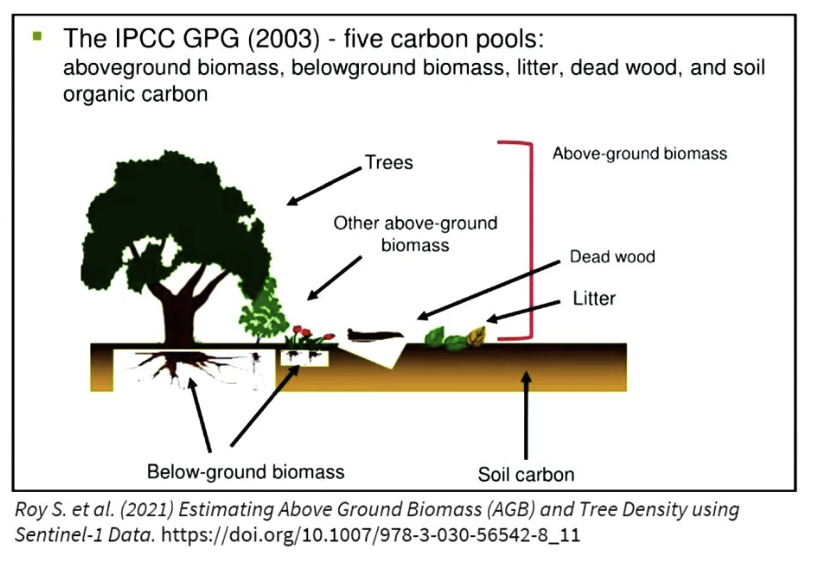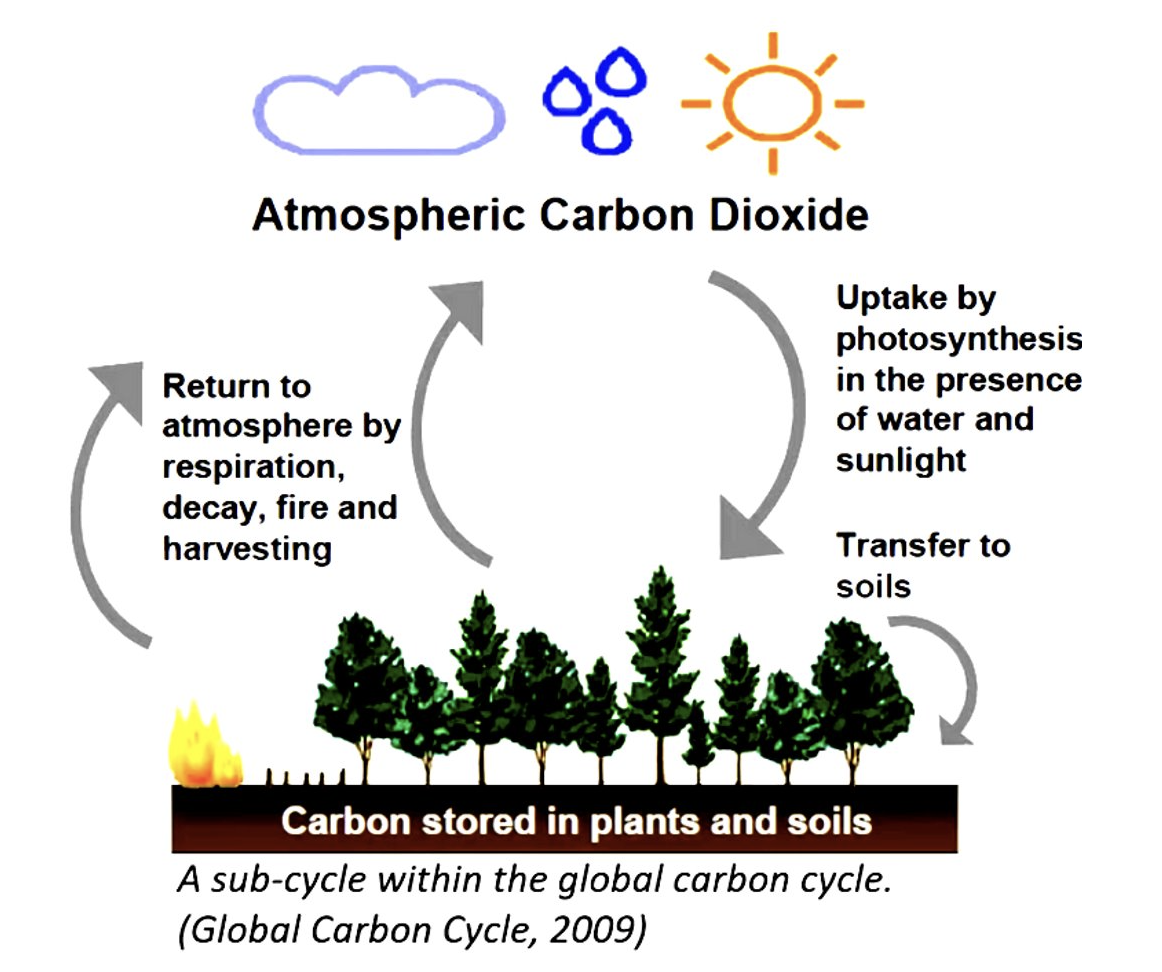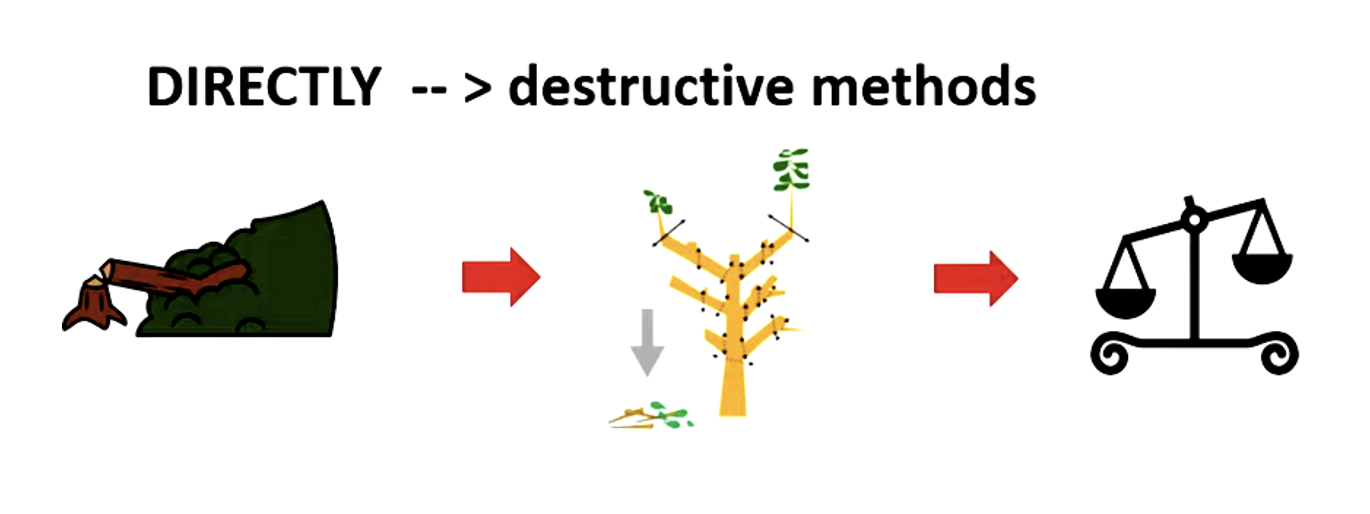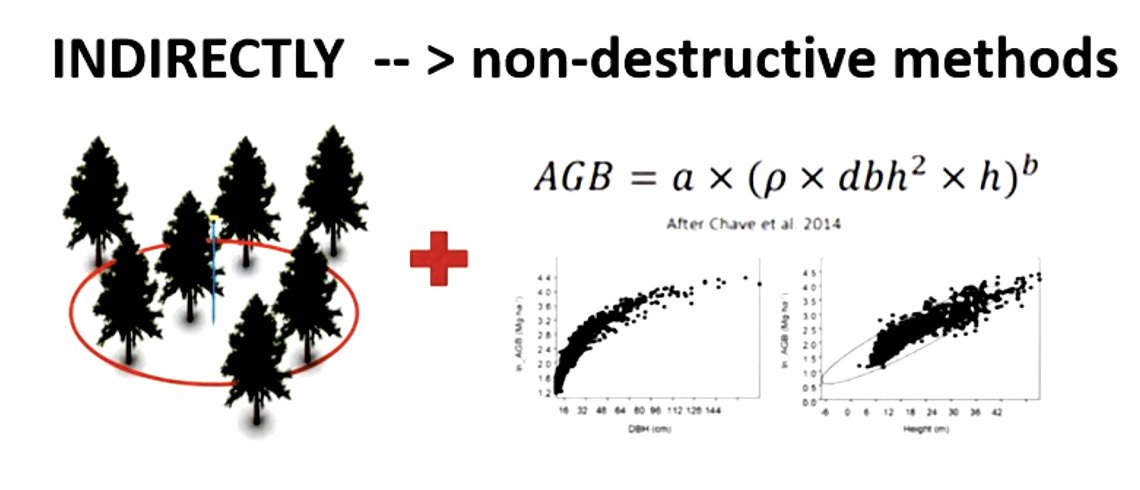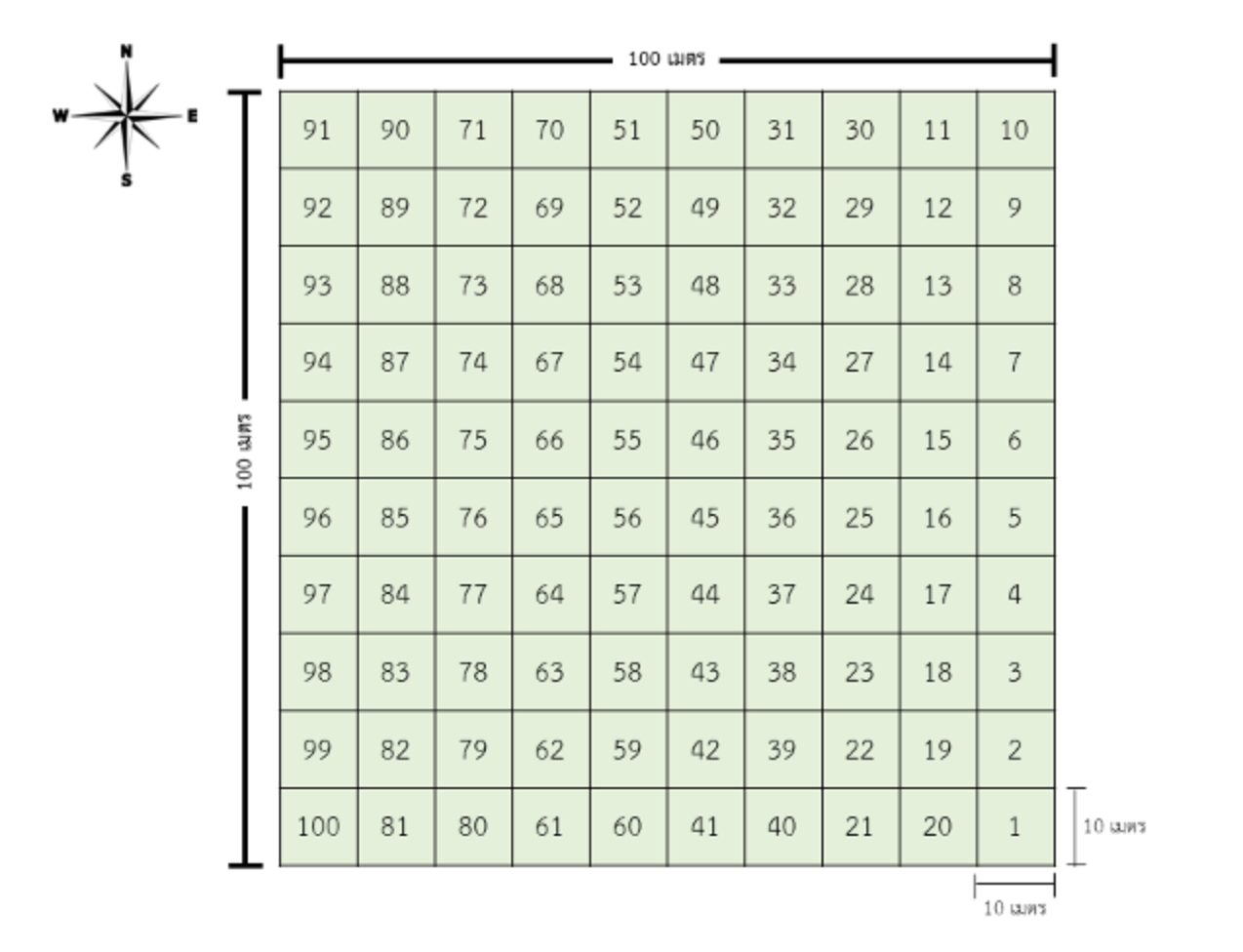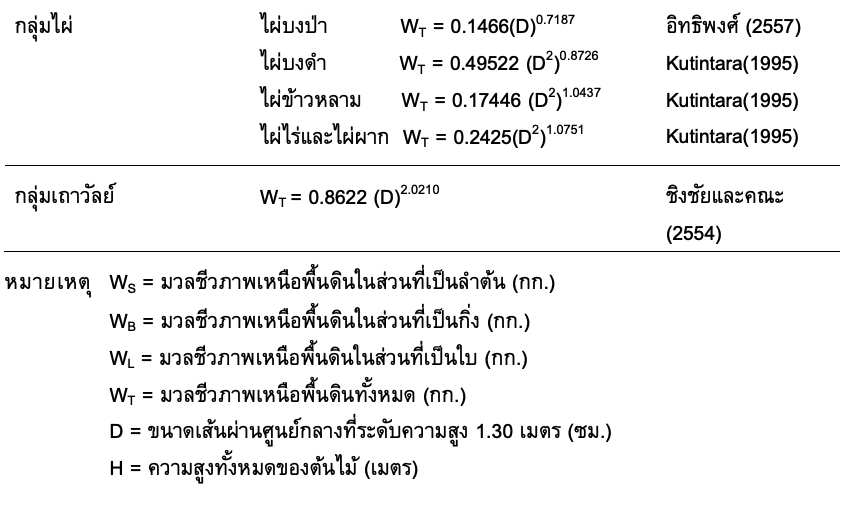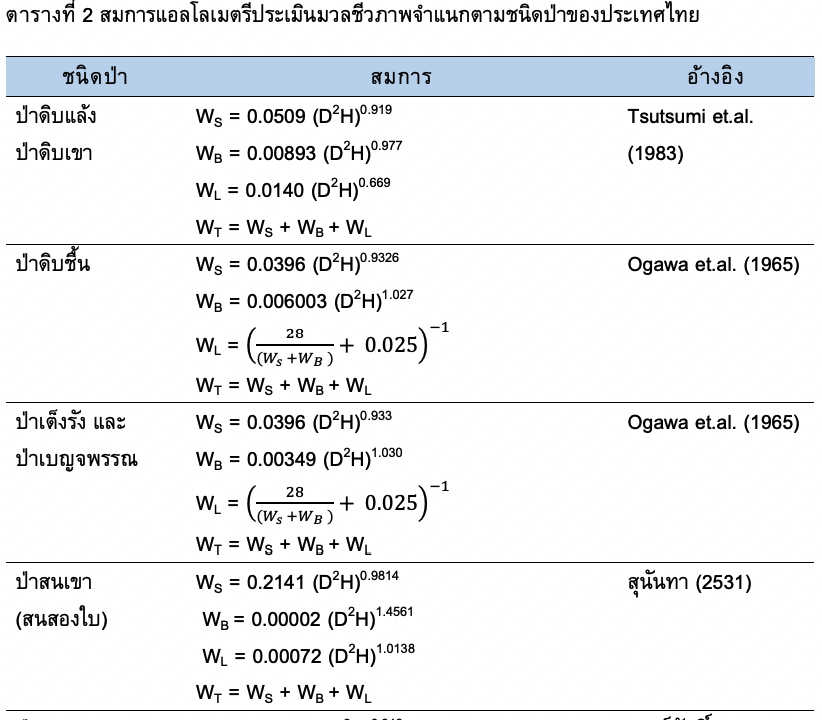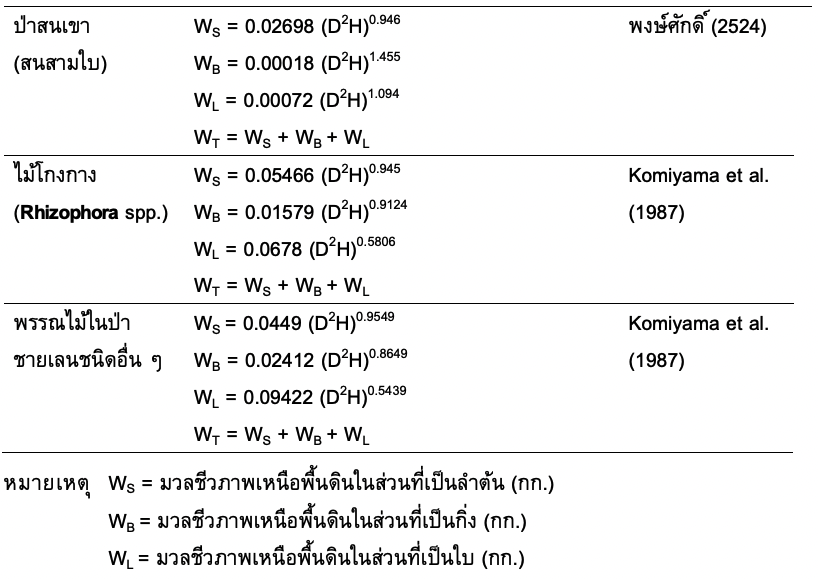Biomass
- Biomass is defined by FAO as the “mass of life” or “dead organic matter” (FAO/GTOS,2009)
- It is generally measured in units dry mass per area (i.e. after removing the water) or units of carbon per area (usually tons/ha or Mg/ha)
- Foest biomass includes mass of all parts of the tree so not only the trunk but also bark, branches, roots, needles or leaves.
Aboveground Biomass (AGB)
- Define as the biomass of living vegatation, both woody and herbaceous, above the soil including stems, stumps, branches, bark, seed, and foliage (IPCC 2003)
Why do we measure forest biomass?
- Economical reasons: we need to understand how much of resource we have in the forest, understand the tree growth cycle and plan forest production.
- Mitigation of climate change: translating the biomass into carbon mass will allow to estimate how much carbon can be sequestred by the forest and finally reducing carbon dioxide in the atmosphere.
Estimation of amount of the forest biomass and subsequently the amount of carbon stored in the forest is crucial in monitoring changes in carbon budget in regional but also global scale!
Field methods for above and belowground biomass estimation
(Huynh et al, 2020)
Forest biomass can be estimated using non-destructive and destructive sampling methods.
It is often impractical to destructively sample all standing trees to estimate biomass due to the negative environmental impacts, wastefulness, and high cost of data collection
Determining generalized allometric equations to assist in rapid field biomass estimates and remote sensing techniques are commonly applied to estimate forest biomass at larger scales
Developing allometric equations for specific forest types based on destructively sampled trees to ensure more accurate and reliable estimates at a local scale is therefore needed
Previous research has established relationships between the weight of tree components and independent variables such as: diameter at breast height (DBH), tree height (H) , canopy area (CA),and wood density (WD) Developing the best relationships for the prediction of aboveground biomass (AGB) and belowground biomass (BGB) often involves one or more of these variables
In Thailand, there was a standard tool such as T-VER-S-TOOL-01-01 to measure carbon stock/above ground biomass, consists of the basic following steps
Determining your plot locations The study area for each forest type was selected based on the slope level of the area, ease of access and time constraints. and then proceed to pick up the sampling plot randomly.
Determining Plot grid, Plot number Depends on standards/tools use in the system, for example : 100x100m plant with 10x10m subplot align with satellite imagery.
- Non-destructive measuring information of the trees in the sample plots collect information such as
- Tree species
- Diameter of the tree at breast height(1.3 m above ground)
- Height of the tree
- Consider collecting sapling information
- Calculate the dry weight or above-ground biomass of a tree. with allometry equations
